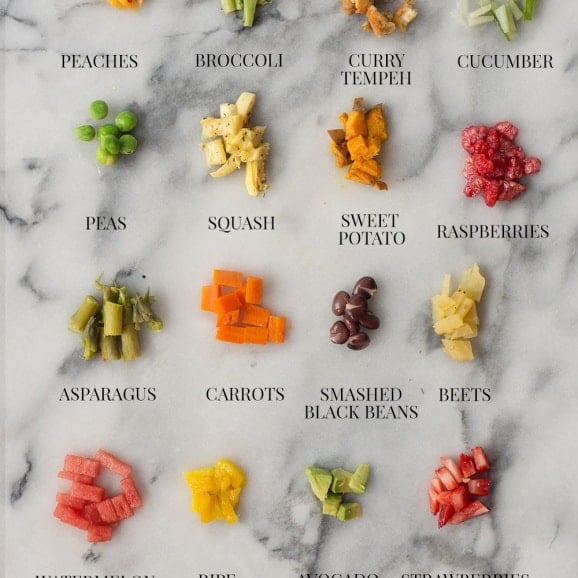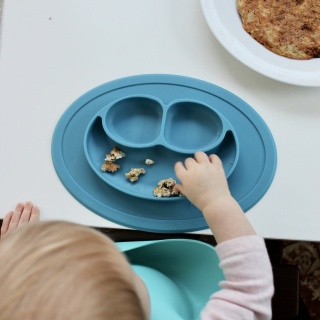I’m excited to share a guest post today from two fellow Registered Dietitians. Read on for 5 tips to encourage your infant to eat vegetables, and great ways to serve vegetables to babies.
I can’t wait to try that recipe out on Riese – and tip #3 below, too!
If you’re interested in learning more about baby led weaning, or looking for recipes or ways to encourage infants to eat more vegetables and plant-based foods, this post is for you!
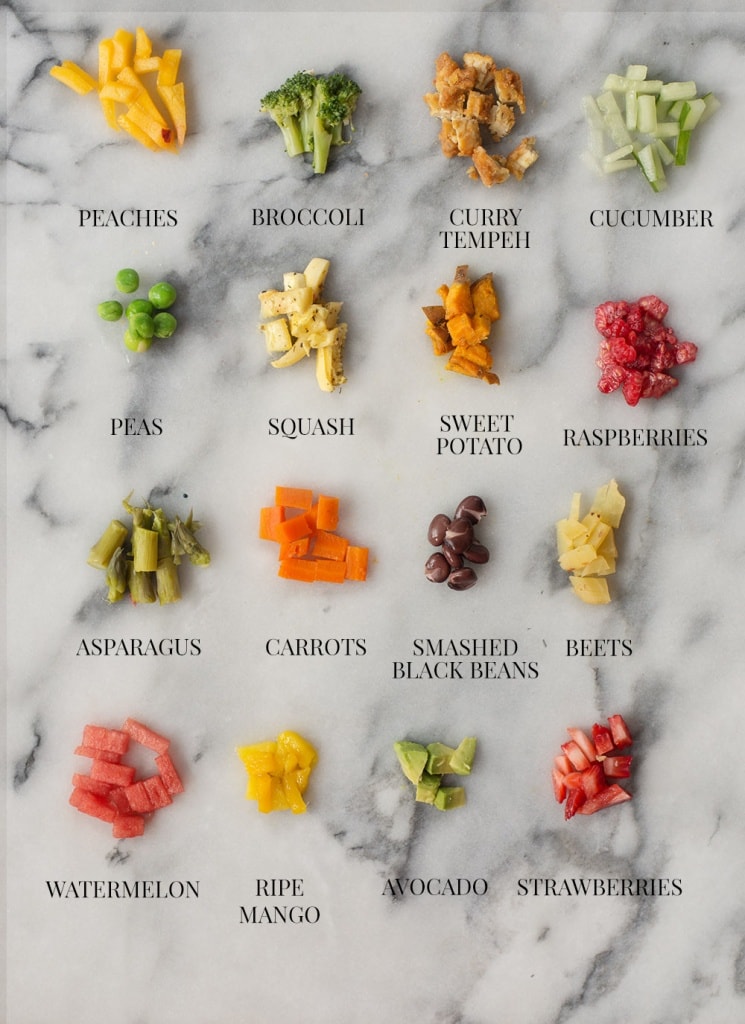
Want to save this post?
Enter your email below and get it sent straight to your inbox. Plus, I'll send you great content every week!
Please note there are affiliate links in this post.
How to Encourage Babies to Eat More Vegetables
guest post by Whitney English Tabaie MS, RDN and Alexandra Caspero MA, RDN, Creators of Plant-Based Juniors
As new parents, we were only vaguely aware of the term “baby-led weaning” before we were thrusted into the new-mom community and saw many of our friends doing it.
Isn’t that the funny thing about becoming a parent?
Suddenly, the things you never knew you cared about become all you think about. AM feedings quickly become optimal research times, scrolling on our phone in the dark looking for answers to the day’s questions.
(Related: check out my post about the best natural and organic personal care products to use for babies and toddlers, plus other Products I Recommend for New Babies + Expectant Mamas)
Baby-Led Weaning
If you’re not sure what baby-led weaning means, let us explain.
It’s essentially the concept of giving babies solid food right from the start–without the use of spoon-feeding purees.
However, the term “weaning” can often be confusing. We aren’t weaning them off breast milk or formula as you’ll still want to offer that until at least the first birthday. Instead, it refers to gently weaning baby on to solid foods, allowing him time to explore various flavors and textures.
In our new ebook, Plant-Based Juniors: First Bites, we outline everything you need to know about baby-led weaning, from how to start, troubleshooting, nutrition, meal prep, a grocery list and more. We also include 20 delicious plant-based, baby-led weaning recipes. (Interested? Use code ‘pbjpartner’ for 10% off your own copy.)
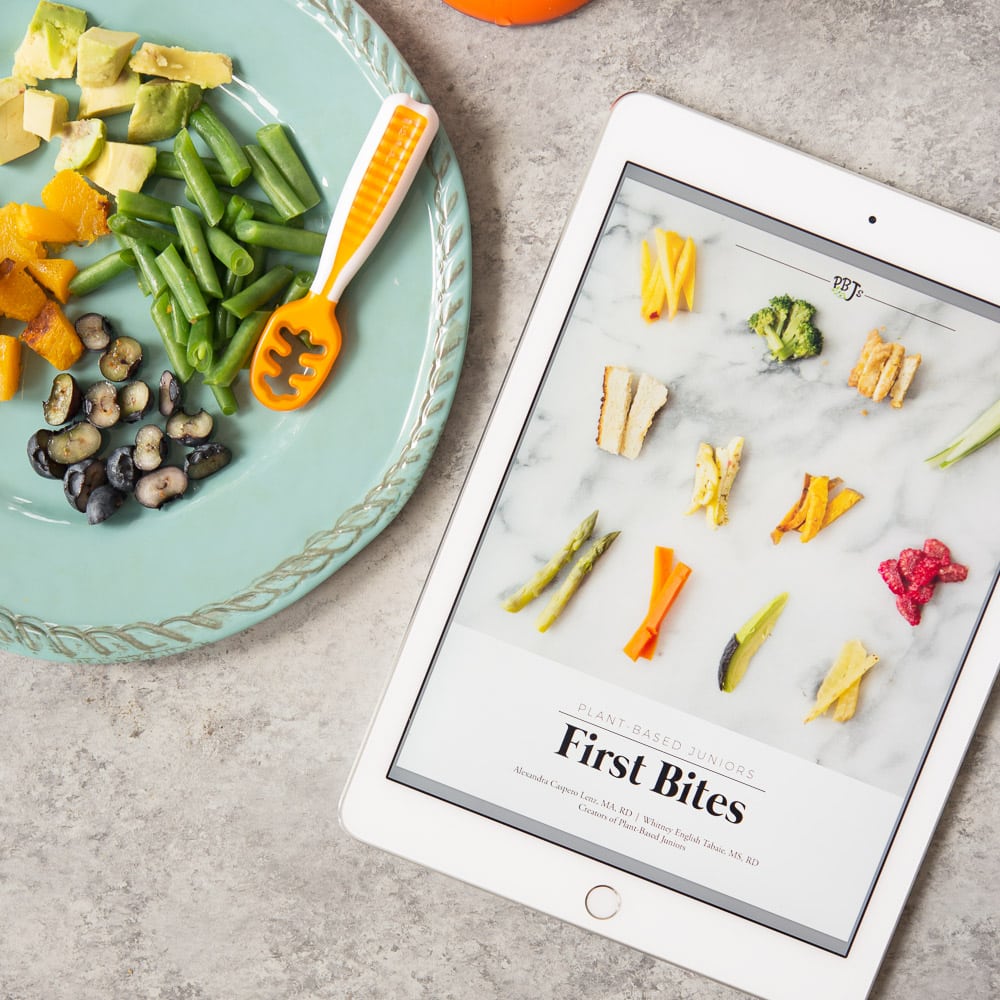
While there are a few advantages of offering solids right from the start, we think the biggest plus is increased acceptance of more interesting and varied flavors and textures since babies get to experience food in its natural state.
Think of your baby’s palate like a blank canvas, easily shaped by each new taste and experience. As dietitians and parents, we’re focused on shaping that palate to enjoy all foods, especially nutrient-rich foods like vegetables.
Therefore, whatever approach to feeding you take, we recommend adding vegetables at almost every meal.
Studies have shown that babies who eat a wide variety of vegetables during the first year of life go onto eat more vegetables than those that don’t. Sweet-tasting vegetables like carrots and sweet potatoes might be more accepted than bitter-tasting vegetables but that’s OK.
Continuing to offer vegetables in different ways helps improve acceptability.
Want more ideas?
Tips to get babies to eat more vegetables
-
Vary your own diet
Breastfeeding? Then your diet may be just as important as baby’s!
According to recent studies, babies are more likely to enjoy the foods their moms ate while breastfeeding over new foods they were never exposed to. If you are nursing, here’s one more reason to pile on the vegetables.
-
Add spice to vegetables
Yes, babies like flavor!
We don’t know where the idea of bland baby food came from, but it likely wasn’t from a baby! Season baby’s food the same way you would yours.
All seasonings are on the table, except for salt, sugar and anything too spicy. Experimenting with different spice blends is a great way to expose your baby to new flavors.
-
Make superfood baby popsicles with vegetables
We consider popsicles to be the perfect place for leftover smoothies and green juices – throw them into a popsicle mold, freeze and you’re done!
Since whole leafy greens can be a choking hazard for young infants, serving them blended in popsicle form is a great solution!
There’s a full recipe in the e-book, but we like to make superfood popsicles with spinach or kale, fruit, and breast milk or formula. A bonus point is that popsicles are a nice treat for teething babes!
More popsicle ideas: Watermelon Rosemary Popsicles (leave out the honey for babies under 1) and Nectarine Ice Pops (leave out the maple syrup, babies don’t need the extra sugar).
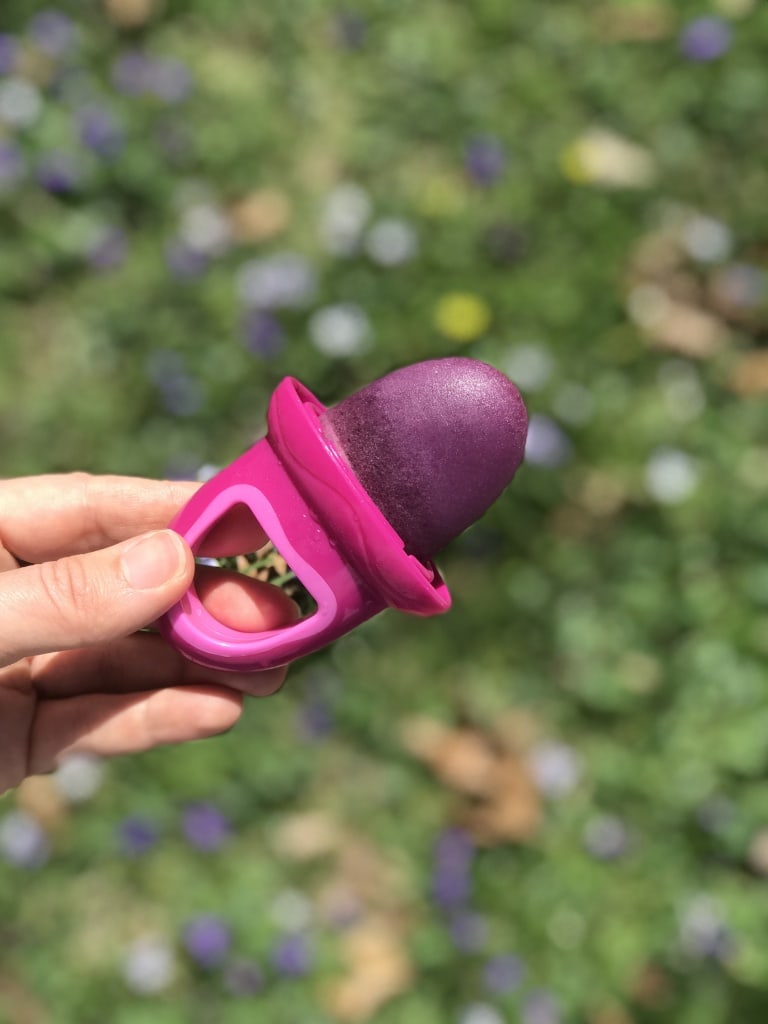
-
Offer your baby vegetables often
The key to acceptability?
Making vegetables part of the everyday routine.
This is true for kids of all ages, the more they are exposed to veggies; the more they are willing to try them.
We like to offer a vegetable in some form at every meal; it doesn’t need to be fancy – even steamed broccoli or finely chopped spinach in scrambled eggs works!
-
Try serving veggies in a dip
We all know that kids love dips!
If your baby is less than a year old, dollop the vegetable dip onto steamed vegetable fingers or spread a thin layer on toast or simply put a dollop on a baby spoon and let them grab it themselves.
For older kids, offer the dip alongside items you know they will eat. For infants, omit any salt in recipes completely as their growing kidneys don’t need it. For older kids and adults, add salt to taste.
Here are a couple dip recipes to try with your kids: Savory Pumpkin Bean Dip + Avocado White Bean Hummus with Lemon.
—
Want more baby led weaning friendly recipes? Be sure to check out the e-book First Bites! In addition to helpful info about starting your baby on solids, it’s packed with 20 delicious plant-based recipes that can be used for baby-led weaning and beyond the first year. Use code ‘pbjpartner’ for 10% off.
Other posts from my blog you might enjoy:


